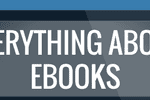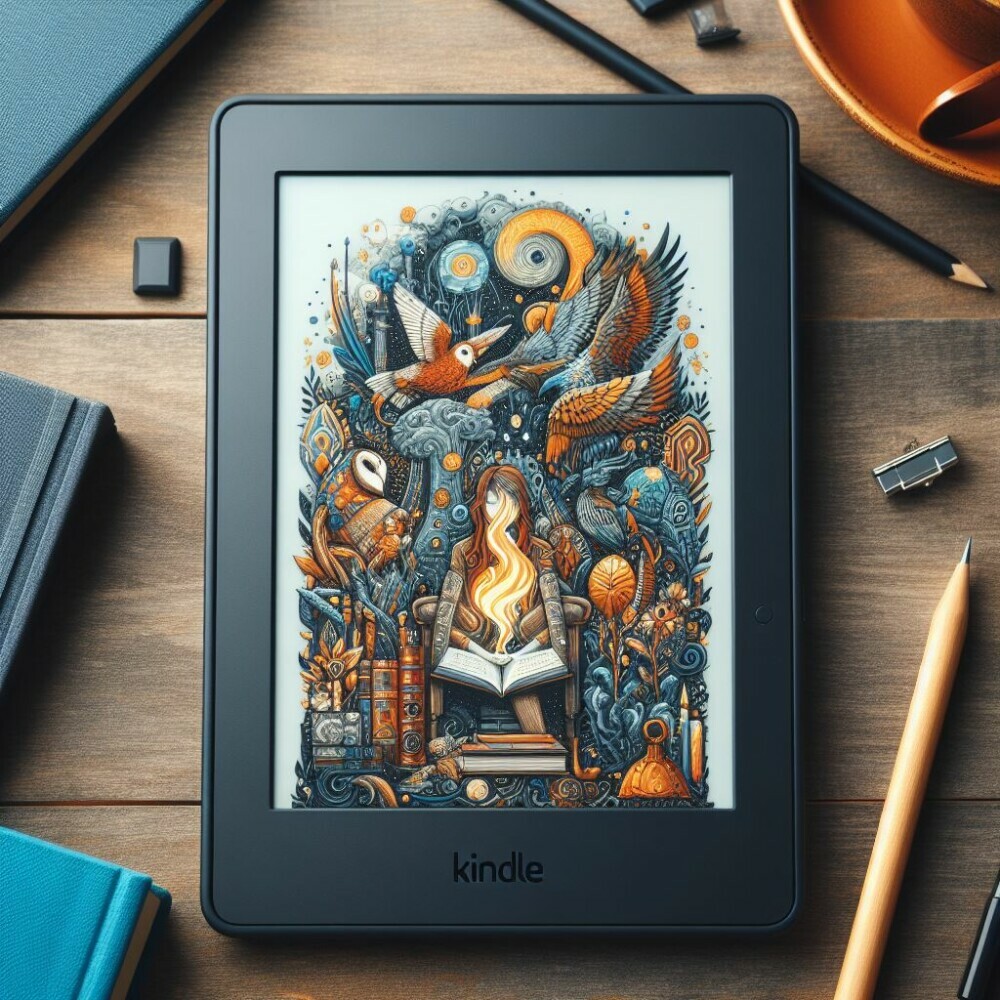
In an ever-evolving digital age, the shift towards electronic forms of reading has highlighted the numerous benefits of ebook readers. These digital devices have revolutionized how individuals consume literature, offering a convenient, portable alternative to traditional books. The importance of understanding these benefits cannot be overstated, as e-readers continue gaining popularity among avid and casual readers alike. This evolution from paper to pixels embodies the blend of technology and literature, making the exploration of the benefits of e-books more relevant than ever.
The upcoming sections of this guide will delve into the various advantages of adopting e-readers, from their unmatched portability and convenience, which allows readers to carry entire libraries in their pockets, to the customization options that enhance user experience. It will also explore the health and comfort benefits provided by features designed to reduce eye strain and allow prolonged reading sessions. Additionally, the discussion will extend to the environmental and economic benefits of ebooks, emphasizing the reduced need for paper and the cost-effectiveness of digital books. Through this comprehensive exploration, readers will gain a deeper understanding of the pros and cons of ebooks and the overarching benefits of e-readers, solidifying their place in the modern reader’s toolkit.
Portability and Convenience
One of the most significant advantages of e-readers is their portability, which allows readers to easily transport a vast library of books in a single, lightweight device. This section explores the facets of portability and convenience offered by e-readers, focusing on easy transportation, the ability to house multiple books in one device, and accessibility from virtually anywhere.
Easy Transportation
E-readers excel in their ease of transport. Unlike traditional books, which can be bulky and heavy, an e-reader is compact and light. This makes it an ideal choice for those who commute or travel frequently. They can slip their device into a purse, backpack, or even a pocket, ensuring they always have their favourite books at hand without the physical burden.
Multiple Books in One Device
The capability to store thousands of books on one device is a game-changer for avid readers. E-readers can hold an extensive collection ranging from classic literature to modern bestsellers, all accessible at the touch of a button. This not only saves space at home but also allows readers to switch between books based on their mood or need without the necessity to physically carry multiple volumes.
Accessible Anywhere
E-readers provide the remarkable advantage of accessing books in any setting. Whether waiting in a queue, travelling on a train, or during a lunch break at work, readers can effortlessly turn on their devices and continue where they left off. Additionally, the availability of e-books through various apps and devices enhances this accessibility, allowing books to be read on phones, tablets, and dedicated e-readers, even without an internet connection. This is particularly beneficial for students and professionals who can utilize travel or downtime effectively by engaging with educational or leisure reading material.
This combination of portability, capacity, and accessibility underscores the convenience of e-readers, making them a superior choice for the contemporary reader who values efficiency and practicality in their reading habits.
Customization and User Experience
Ebook readers offer a range of customization options that significantly enhance user experience by catering to individual preferences and needs. These features not only make reading more enjoyable but also more accessible to a wider audience.
Adjustable Text Size and Fonts
One of the fundamental benefits of ebook readers is the ability to adjust text size and font settings. Users can choose from predefined sizes such as XX-Small to XX-Large, which helps cater to various visual preferences and needs. This customization is crucial for those who require larger text for comfortable reading or those who prefer smaller fonts to maximize page views. Additionally, some e-readers allow modifications to font styles, transforming the readability by switching between serif and sans-serif fonts depending on the reader’s comfort.
Built-in Dictionaries and Search Functions
Ebook readers are equipped with built-in dictionaries and search functions that enhance the learning experience. Readers can easily look up the definitions of words without leaving the page, fostering a seamless reading flow. This feature is especially useful for non-native speakers or students who are keen on expanding their vocabulary. Moreover, the search function allows users to quickly locate text within the ebook, making it easier to reference and recall information efficiently.
Interactive Elements and Annotations
Interactive ebooks provide a dynamic reading experience by incorporating elements such as audio, video, and hyperlinks. These features engage different learning styles and can significantly enhance the comprehension and retention of information. Readers can also interact with the content through annotations, note-taking, and highlighting, which are invaluable for students and professionals who use ebooks for educational and research purposes. The ability to share notes or discuss insights directly within the ebook environment supports collaborative learning and adds a layer of interactivity that traditional books cannot offer.
These customization features not only make reading more engaging but also adapt to the diverse needs of users, ensuring a more personalized and satisfying reading experience.
Health and Comfort
E-book readers offer significant health advantages, particularly in reducing eye strain and enhancing overall reading comfort. Users experience less visual fatigue with E-ink displays, which mimic the appearance of ink on paper and are easier on the eyes compared to backlit screens.
Reduced Eye Strain
E-ink technology, used in devices like Amazon’s Kindle and Barnes & Noble’s Nook, reflects light like traditional paper, reducing glare and eye strain. This technology is beneficial in bright environments, where it prevents the light from shining directly into the eyes, making it easier to read without causing discomfort. Conversely, LCD screens, despite advancements such as IPS technology and anti-glare filters, still direct light towards the eyes, which can increase visual fatigue, especially during prolonged use.
Read Aloud and Night Mode Features
Modern e-readers also come equipped with features like Read Aloud and Night Mode, which further cater to health and comfort. Night Mode, in particular, adjusts the screen’s brightness and reduces blue light exposure, which is known to interfere with sleep patterns. This mode is especially useful in low-light conditions, helping to minimize eye strain and maintain natural sleep cycles. Additionally, the Read Aloud function can provide a restful experience by allowing the eyes to relax while listening to the content, making e-readers a versatile choice for various reading preferences and needs.
These features collectively enhance the usability of e-readers, making them a preferable option for those who spend significant time reading or require flexible reading solutions to accommodate their health needs.
Environmental and Economic Benefits
Eco-Friendly
E-readers present a significant environmental advantage primarily due to their paperless nature, which directly contributes to reducing deforestation and the associated carbon emissions from paper production. A single e-reader can hold thousands of books, significantly diminishing the need for physical copies. For instance, producing a traditional book generates approximately 7.5kg of CO2, whereas the carbon footprint of an e-reader is about 168kg. To equate the environmental impact of one e-reader, one would need to read between 22-23 books digitally. Considering the longevity of e-readers, which can last for years, the potential for reducing individual carbon footprints is substantial. Additionally, e-readers help in minimizing the waste associated with unsold physical books, which often end up being destroyed or recycled at further environmental costs.
Cost-Effective in the Long Run
From an economic perspective, e-books offer substantial savings over printed books due to lower production costs. There are no expenses related to printing, shipping, or storage, and the risk of unsold inventory is virtually eliminated. This efficiency allows for e-books to be priced lower, making them more accessible and affordable. Consumers can often find digital books priced significantly less than their physical counterparts, especially with frequent promotions and discounts. For avid readers, the initial investment in an e-reader can be quickly offset by the lower cost of purchasing digital books. Moreover, the ability to download books instantly further enhances the value proposition, providing immediate access without the wait or extra cost of shipping.
Conclusion
Throughout this guide, we have thoroughly examined the multifaceted advantages of e-readers, underscoring their transformational role in today’s reading habits. From the unparalleled convenience and customization options they offer, allowing readers to carry entire libraries in their pockets and adjust reading settings to their preference, to their significant contributions towards environmental sustainability and economic efficiency. These digital devices not only enhance the accessibility and enjoyment of reading for individuals but also present a compelling case for a more eco-conscious and cost-effective approach to consuming literature in the digital age.
Moreover, e-readers’ health-friendly features, such as reduced eye strain through E-ink technology and customizable reading modes, cater to the well-being of users, marking them as a preferable choice for prolonged reading sessions. The exploration of these benefits reaffirms the significance of e-readers in fostering a more inclusive, sustainable, and reader-friendly environment. As we continue to navigate the evolving landscape of digital reading, the widespread adoption of e-readers promises to redefine our reading experiences, making literature more accessible and enjoyable for everyone.
FAQs
1. What advantages do ebook readers offer?
Ebook readers are cost-effective, convenient, and portable, making them an environmentally friendly choice. They provide a range of customization options, accessibility features, and multimedia elements that traditional printed books do not offer.
2. What are some drawbacks of using eBooks?
One major drawback of eBooks is their inability to provide the tangible, aesthetic pleasure that comes with owning a collection of print books. Although digital libraries are convenient and save space, they lack the emotional connection many readers develop with their physical books and bookshelves.
3. What are some alternatives to Kindle for ebook reading?
For those seeking alternatives to Kindle, consider the Kobo Libra 2 as the best overall alternative. The Nook Glowlight 4e is excellent for dedicated ebook reading, while the Boox Note Air 3 serves as a premium alternative. For a versatile all-purpose option, the Apple iPad (10th-gen) is highly recommended.
4. Is it possible to read eBooks on an Android phone?
Yes, you can read eBooks on an Android phone using Google Play Books. This app allows you to download and read eBooks on multiple devices, upload your own ebook files, and even print books.

